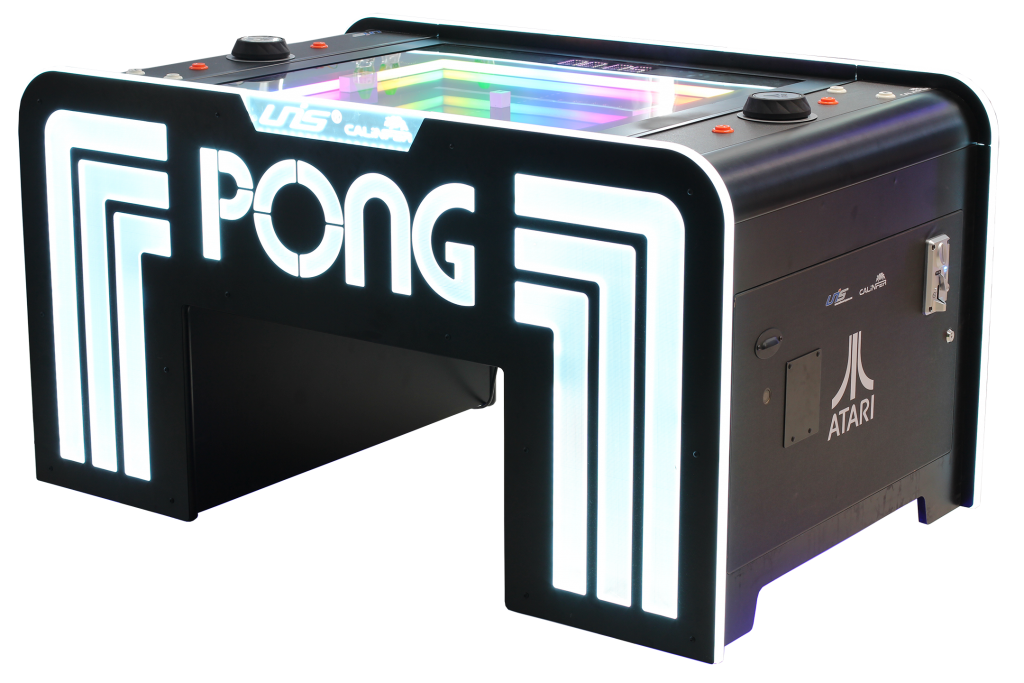 UNIS & Calinfer’s Atari Pong Ready for Coin-Op
UNIS & Calinfer’s Atari Pong Ready for Coin-Op
Unique Reimagining of the Classic Game Set to Debut at IAAPA
Pong, the iconic Atari video game from the Golden Era, has undergone a rebirth into an electromechanical version with a twist in an eye-catching, buzz-generating table game that’s finally ready for coin-op.
Shown in a non-coin, consumer model at last year’s IAAPA show and again at this past spring’s Amusement Expo, the Atari Pong table game is a joint venture between its creator Calinfer of Uruguay and the game pros at UNIS. Steven Tan, UNIS’s General Manager, says the coin-op versions are now ready for prime time and will take center stage at the factory’s IAAPA booth this month in two models –– a classically styled cocktail table ideal for bars, restaurants and other route locations and an arcade table (available with or without ticket dispenser). Both will be ship in early December.
“What’s exciting,” Tan said, “is that despite the great interest in the Atari Pong table, we haven’t really been able to sell it properly to the FEC/LBE market because it wasn’t coin-operated, it was free play. However, our license covered coin-operated games, too, so we’re excited to be launching it in two, fully-coin-op versions at the IAAPA show.”
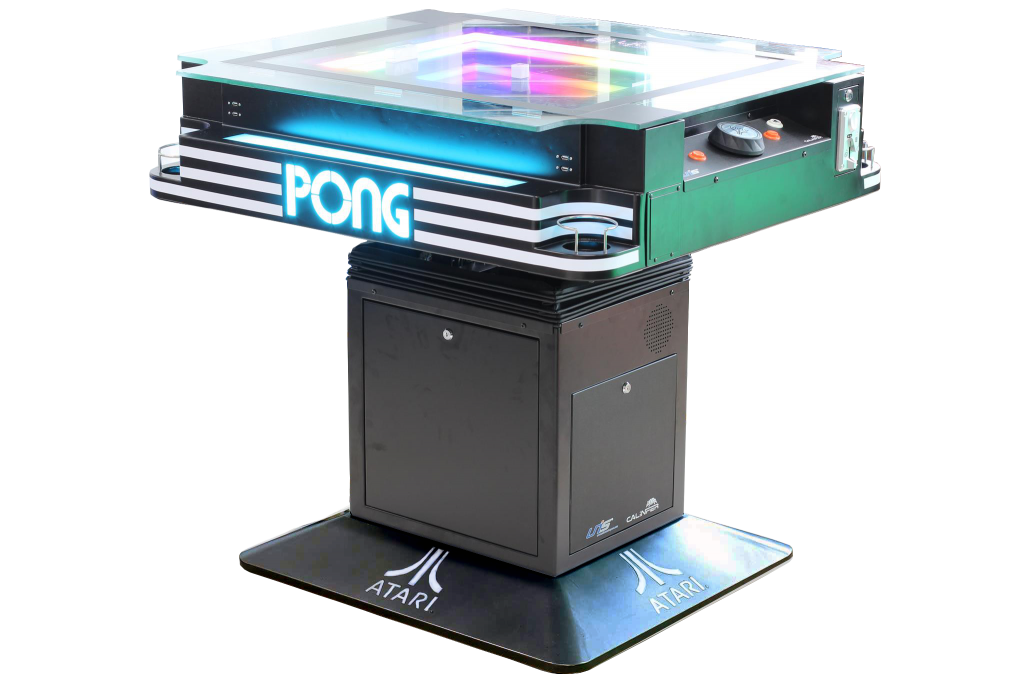 Called simply Atari Pong Cocktail Table and the Atari Pong Arcade Table, the games are eye-catching with their retro styling and Atari logo. In the new mashup of technology, those paddles and the ball that once bounced around on a CRT are now physical elements controlled by magnets and motors underneath a glass display, which acts as the playfield. The player rotates a knob to position his paddle as the ball comes careening towards him (he can play against an opponent or the computer) and the game’s LED display is used to show the score and net line. Sound effects and cool LED lighting ringing the playfield complete the appeal. (For reference, the Atari Pong Cocktail Table measures 56″ x 35″ x 32″ and the Atari Pong Arcade Table is 40″ x 44” x 38”.)
Called simply Atari Pong Cocktail Table and the Atari Pong Arcade Table, the games are eye-catching with their retro styling and Atari logo. In the new mashup of technology, those paddles and the ball that once bounced around on a CRT are now physical elements controlled by magnets and motors underneath a glass display, which acts as the playfield. The player rotates a knob to position his paddle as the ball comes careening towards him (he can play against an opponent or the computer) and the game’s LED display is used to show the score and net line. Sound effects and cool LED lighting ringing the playfield complete the appeal. (For reference, the Atari Pong Cocktail Table measures 56″ x 35″ x 32″ and the Atari Pong Arcade Table is 40″ x 44” x 38”.)
The first version of the product, the consumer table, has been doing quite well, reported Tan. “We have been shipping the Atari Pong Coffee Table for some time now and have hundreds and hundreds out in the market.” He’s taken it to almost two dozen different events from CES to pinball and retro game fests and has a firsthand sense of what Pong means to players.
“I’ve seen it entertain three generations from young children to grandparents.
Because Atari’s Pong is so iconic, everyone wants to play it! What’s also important is that the Atari Pong Table is fun in many ways, playing a bit like an air hockey.”
Tan said its head-to-head battle between players also makes it great for tournaments and contests, adding, “UNIS has run large-scale tournaments (ourselves and along with our dealers) on the home table giving out prizes and as we talk, we’re planning another one for the Pinball Expo in Chicago.” At one event, the Toronto Home Show, it won the best product award.
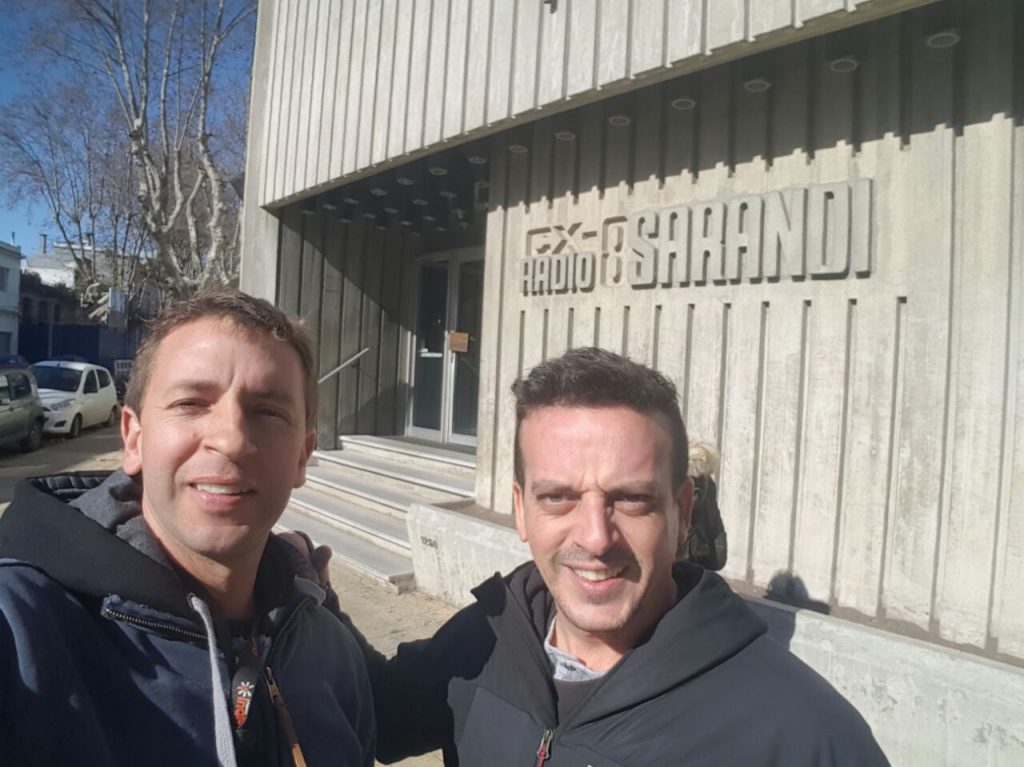
But in speaking with Tan about the game, his excitement really gets kicked up a notch when he talks about how the new Atari Pong came to be in the first place.
“It’s a beautiful story about how the product was invented by Daniel Perdomo in Uruguay, a small country with few resources. Daniel’s story is one that the industry should cherish,” Tan said. “He had guts and tenacity to invent this in his garage. I have been so intrigued by his story and love telling it to the retro game fans at the pinball shows. People think it’s easy to invent something like this, but it’s not. You need a business plan for success.
“Daniel had the vision to reach out to Atari to get approval, writing to Nolan Bushnell and to Atari to get the global license. It took a lot of money to build the game and yet he raised it. When it came out, it went viral,” said Tan.
“That’s why UNIS wanted it. I flew to Montevideo to make the deal and I tell you this story is as good a story as you’ll ever hear in the industry. To get this license is amazing and the product sells itself. I really appreciate having this opportunity to take on this iconic Pong brand,” he concluded.
RePlay was intrigued so with UNIS’s help was able to learn about the backstory from the best source: creator Daniel Perdomo.
RePlay: First, please tell us a little bit about your background.
Daniel Perdomo: Prior to the Table Pong Project taking off, I worked in the advertising industry for 25 years. This time was comprised of seven years at the first motion graphics company in Uruguay, and then another seven at a firm my former boss and I had started called, Kamikaze. Most recently, I spent 11 years running my own studio called Caramba. My specialties involved directing television commercials, motion graphics, animations and special effects. I felt incredibly lucky to work in the ad industry for so long, however, towards the end it felt more like an actual job than something I loved.
I was yearning for a change, looking to find new challenges in the creative/design field. I believe the Pong project was an unconscious impulse in looking for fresh energy to keep expressing myself. When we first shared our project on social networks, a lot of positive feedback was received, in addition to requests asking for a table. I decided to go out of my comfort zone by jumping all in and creating Calinfer. I committed 100 percent of my energy into this endeavor without any savings because I believed it was the right choice.
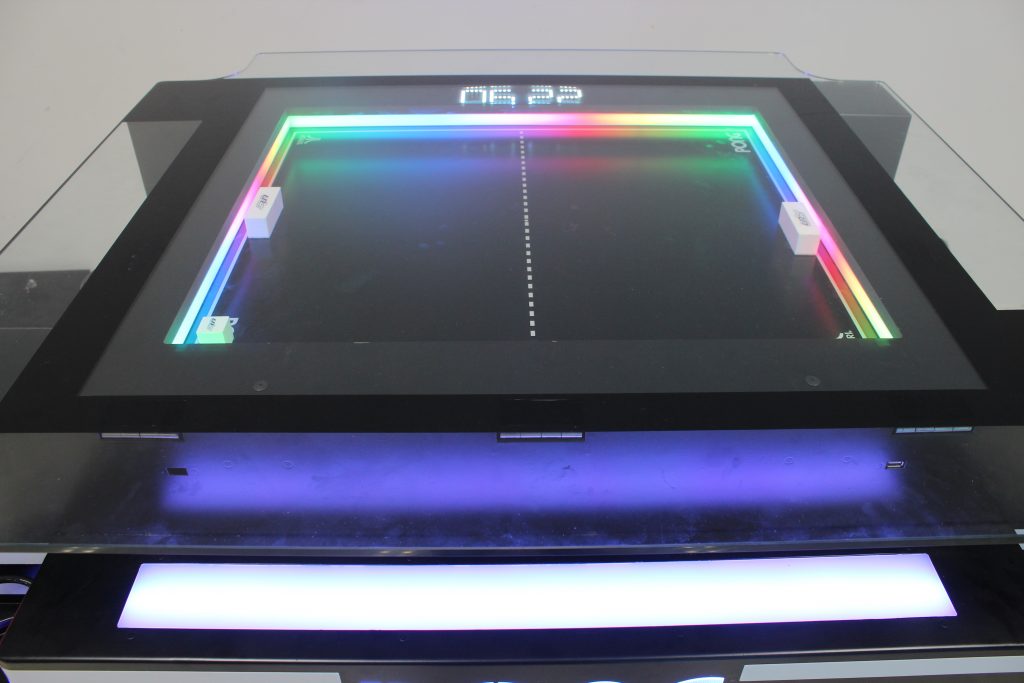
What gave you the initial idea to create the Pong table and can you walk us through the process?
Five years ago, I was playing with magnets at the kitchen table with my daughter. We were moving some magnets under the table and controlling the magnets atop the table simultaneously. (I think everyone has done that at least once in their lifetime). Magnets have a kind of magical force that most people don’t understand, but have fun playing with nonetheless.
In that moment, I am not sure why, I made an association with the Pong game and thought how exciting it would be to play a physical version of the game driven by magnets.
Fast forward to one night when I was having a drink with my friend, Alvaro Salsamendi, who works in the construction business. I brought up the physical concept of Pong. Salsamendi, having an inventive soul like mine, loved the idea. Neither of us had any knowledge of prototyping, industrial design or electronics, but we decided to embrace this challenge by turning it into our hobby. We spent our spare time at night working on the idea and seeing how far we could take it. Little by little we began to learn about circuits, lights, sound cards, magnetic forces, electric motors and displays. It was a very rewarding experience as each individual aspect fell into its respective place in this puzzle of electronic components and mechanics.
How long did it take to build a prototype and what were the challenges?
Since we didn’t know much at the beginning, the first attempts were pretty frustrating. Nothing seemed to work, but through much dedication and time we slowly began to make progress. I think the most difficult challenge we faced was the magnetic system. We had to ensure we had enough power to control the elements above the playing surface while not creating too much friction and force that would, in turn, scratch the surface. It was a fine balance of magnet strength, playing surface thickness, and materials that required a lot of effort to overcome.
As the project continued, we invested significant time into researching concepts on the Internet. It’s amazing how much knowledge is just a few keys away. I used my basic knowledge of programs like After Effects and 3D Studio Max to do some scripting. We then discovered an open platform for electronic prototyping called Arduino, which helped us a lot. The users and forums on that platform were very informative and supportive of everyone’s work. Also, the likes of YouTube and Wikipedia aided in our research and development.
After a year and a half, we finally built our first working prototype. We were really surprised by what we achieved and never dreamed about accomplishing so much. Our family and friends were really excited about our achievements and being able to create the prototype, however, we weren’t sure if it was all for real, meaning, if it could be a mass-production product or if we were just crazy and people were cheering us on to be nice.
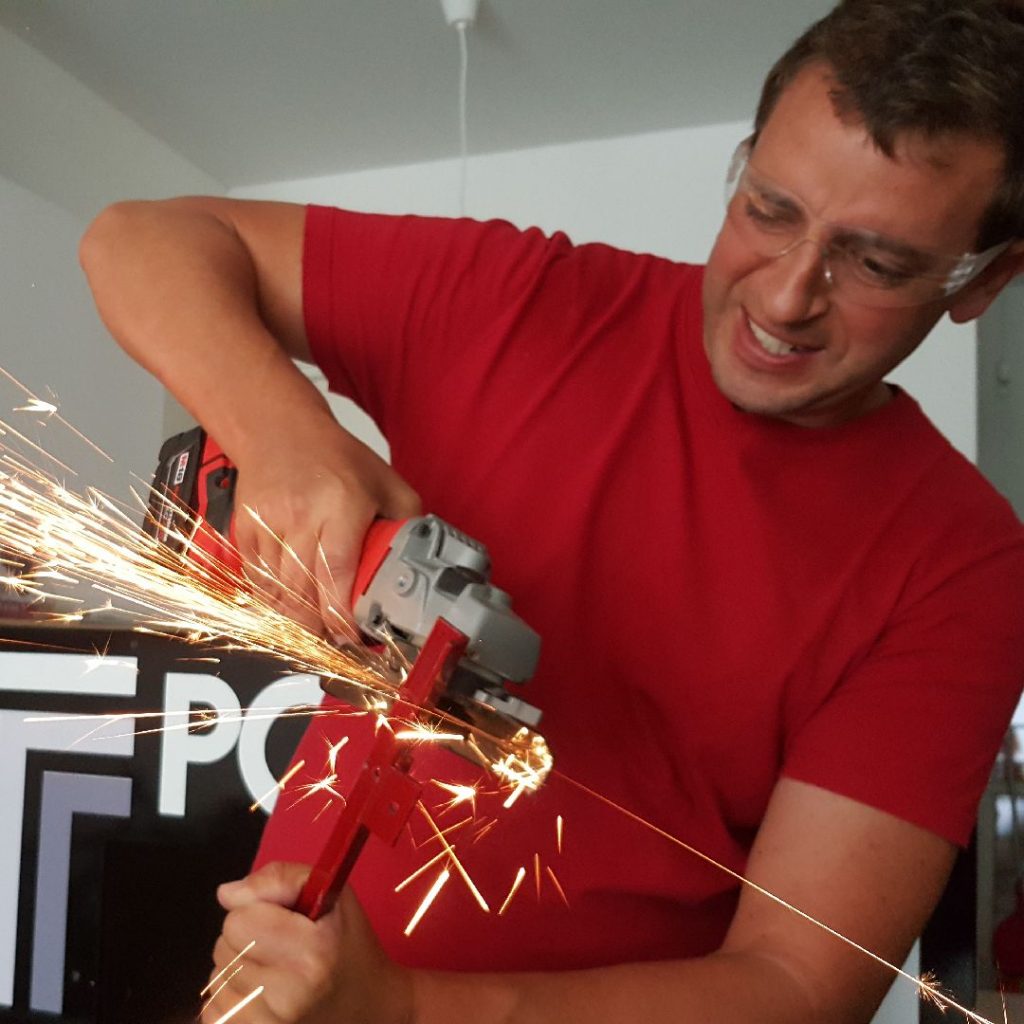
Once we had the working prototype in order, we contacted Atari. Our goal was to understand their interest level in turning the prototype into a production-ready game. Communication went back and forth until it ended with them saying to come back with a more finalized product.
At that point we needed expert help, and we reached out to a hardware incubator (HAX). They seemed to be a great option since they were in China’s “Silicon Valley” of electronics, Shenzhen. We felt it was a place that could likely help us progress the project further in a few months than we could do by ourselves in a few years.
Their program selects 10 projects bi-annually, provides seed capital, and moves your team to China for six months to work in conjunction with their tutors and infrastructure. We were pre-selected as finalist and the excitement was insane. We began the interview process and the anticipation continued to build. When decision day came, we received an email telling us that we were not selected. Devastation sank in and we decided to take a break from the project.
Once the summer arrived, we went on vacation and rested our minds. Upon returning home, there sat the table in my living room. It had been in the same position taking up a lot of space for over a year, and we decided to disassemble it and place it in the garage.
But, as we know, you and Salsamendi didn’t give up. Tell us how people began to know about your Pong Table and what it was like when it went viral.
When we began our venture of creating the Pong table, we filmed all of the processes with our cell phone. One day I decided to compile the footage and create an edit that started from the beginning of the project all the way to the working prototype. I shared it on Facebook and Youtube so people could provide some feedback.
Friends were telling us the video was spreading like crazy. I logged onto Reddit and there it was –– our Pong table making its mark on the world. We were the second top-trending post after SpaceX’s first successful rocket landing. The feeling was bliss.
Then the project started to be featured on sites like Popular Mechanics, PCMAG, Playboy, Gamespot, NYMag, Wired and more. The list started to grow faster and faster. The feedback and love from what we created was both incredible and scary at the same time. We weren’t sure how to react.
Wired Magazine invited us its WIRED2016, a geek event that meets annually in London. It was an honor to be the only project invited from the Americas. I was especially flattered because I had been a big enthusiast of their magazine my entire life. That event was the first public appearance of the table in which we were able to see firsthand reactions.
Everyone was surprised with the fact that the table was a nostalgic retro/modern product. A mixture of its design and technology alongside the Atari cult brand of the ’70s and ’80s made it a smashing success among 40-year-olds and young kids alike. I believe the simplicity of the game permits all generations to have fun, especially since physical presence is diminishing in the world of digital and virtual games.
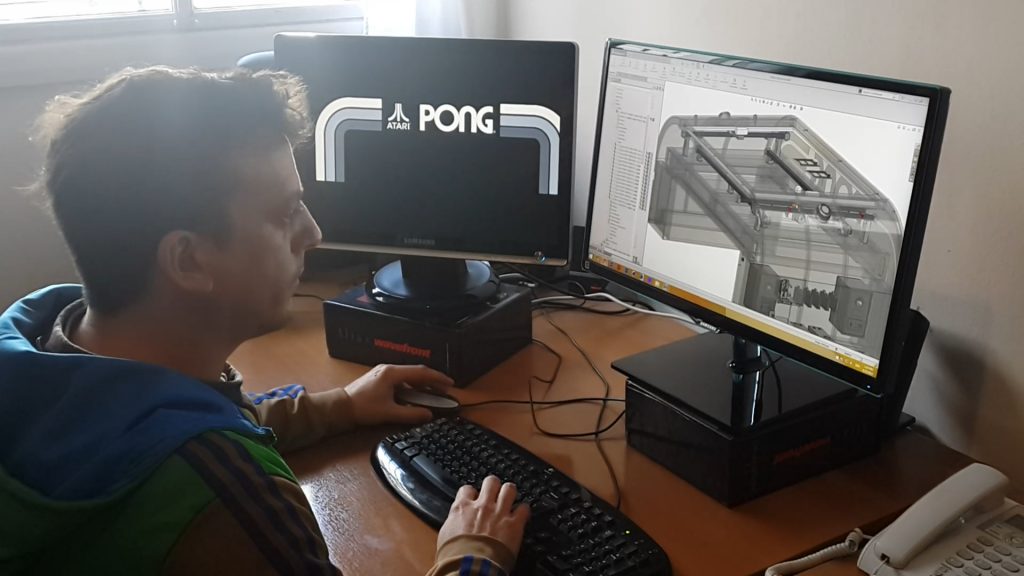
When did you start the Kickstarter funding campaign? Were you surprised by how excited people were about the project?
We launched that in April 2017 and applied for a program that supports startups in Uruguay. The foundation called ANII (Innovation and Research National Agency) gave us the seed capital we used to produce the Kickstarter campaign video and promotional content.
The campaign was both exciting and nerve-racking since we had to meet our goal of $250,000 USD. With Kickstarter, you either have to reach your entire goal or you get nothing at all. We continued to refresh the page at all hours of the day. Within the first few days we reached 50 percent of the goal. As the 30-day time period progressed, the number of new backers began to slow down. With only three days left we were stuck at 80 percent of the funds needed. While the finish line was so close, it felt like we were never going to get there until a miracle happened. In the end, we surpassed $330,000 USD as the deadline came. It was a very intense moment that will never be forgotten.
How difficult was it to contact Nolan Bushnell and the others you needed to work with for the license? How did you go about finding who you needed?
We started our search for Nolan on Wikipedia and noticed he was working on a project called BrainRush. We did some digging on their site and came across a Bushnell email, however, it was his daughter’s. We compiled an email with photos and a report of our progress so far, and asked her to help us contact Nolan. Some days later we received an email from him and it was very flattering.
Atari was a little easier to contact as they have an office in New York City where we called them directly.
Were there any times you felt the task was too daunting and that you might give up?
When we started this project we never dreamed of taking it so far. Every milestone we achieved was in thanks to our ingenuity, addiction to solving problems, and our stubbornness. We were not going to allow for an unsolved problem to prevent us from moving forward, thus we had to continue learning and find new way to be successful.
The hardest stage was when we were rejected from HAX since we had a lot of illusions about how they could help us make this product a reality. The Kickstarter campaign was also very exhausting since we had come so far, but in the final days still had failure looming over us. But, even if the campaign had failed, we would have continued forward in finding another way to keep the ball rolling.
After the successful Kickstarter campaign, I jumped all in. I left my former career, running Caramba, behind, knowing that this was the project of my life. I preferred to try it and fail, than to never know what the Pong table could have been.
How did UNIS get involved?
Following the Kickstarter campaign, we began working on sourcing from China, looking for a strong manufacturing relationship. We found UNIS to be one of the biggest and most important companies in the amusement industry, so we contacted them. After showing them our advancements, they were interested. Ten days later, General Manager Steven Tan and Managing Director Gene Cramm visited us in Uruguay to see the prototype. We successfully closed a partnership deal with them for manufacturing, marketing, and worldwide sales.
Our experience with UNIS has been incredible. Their team has been really professional and works very efficiently. The levels of excellence in the factory and people are of the highest caliber. We are both very happy and lucky to have found them as they have made us proud in how they’ve continued forward with the project.
For more information on the new Atari Pong cocktail or arcade tables, visit UNIS online at www.universal-space.com. There is also a dedicated website for the game at www.tabl pongproject.com.

